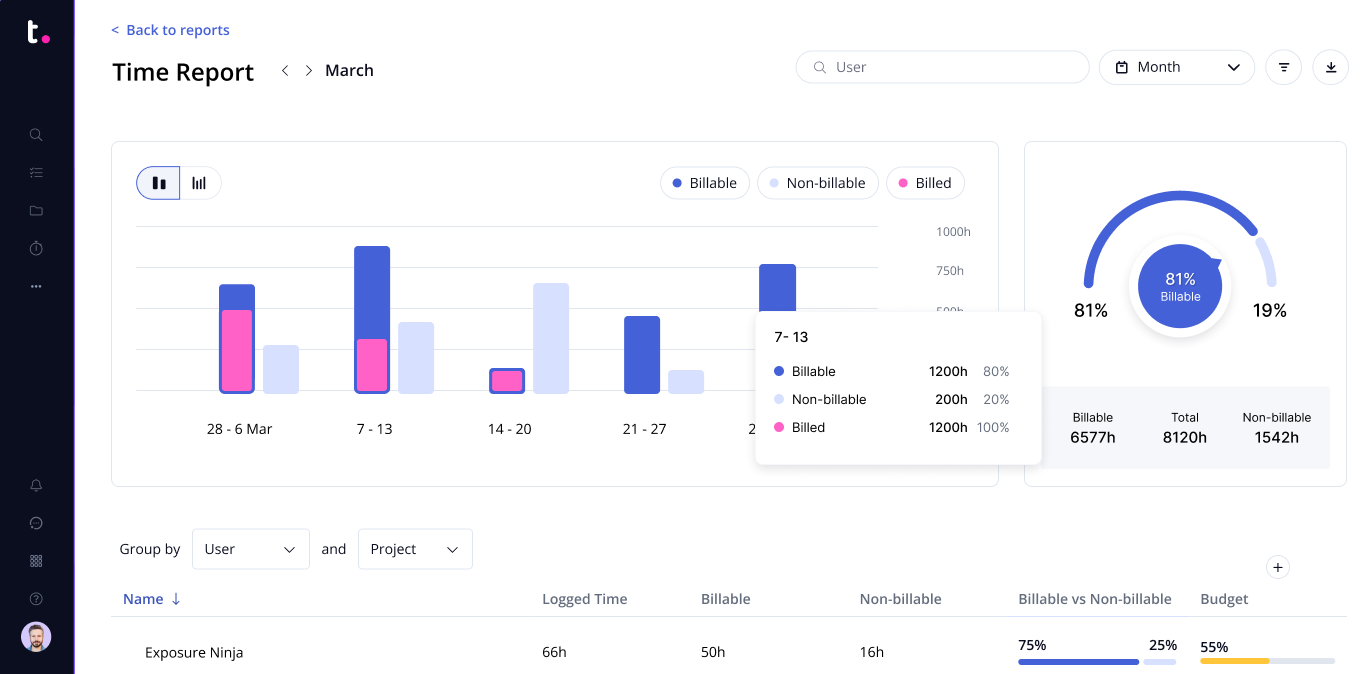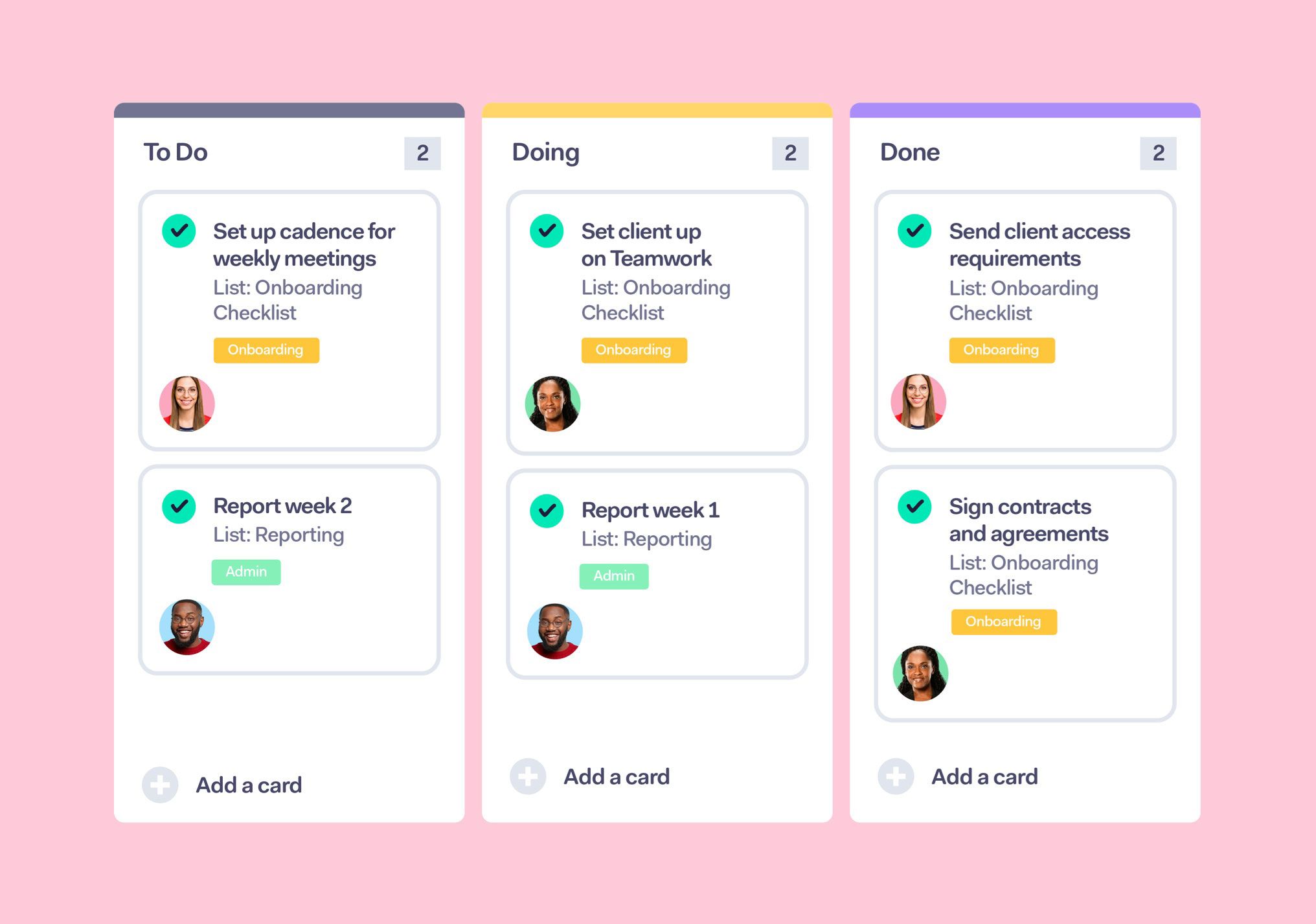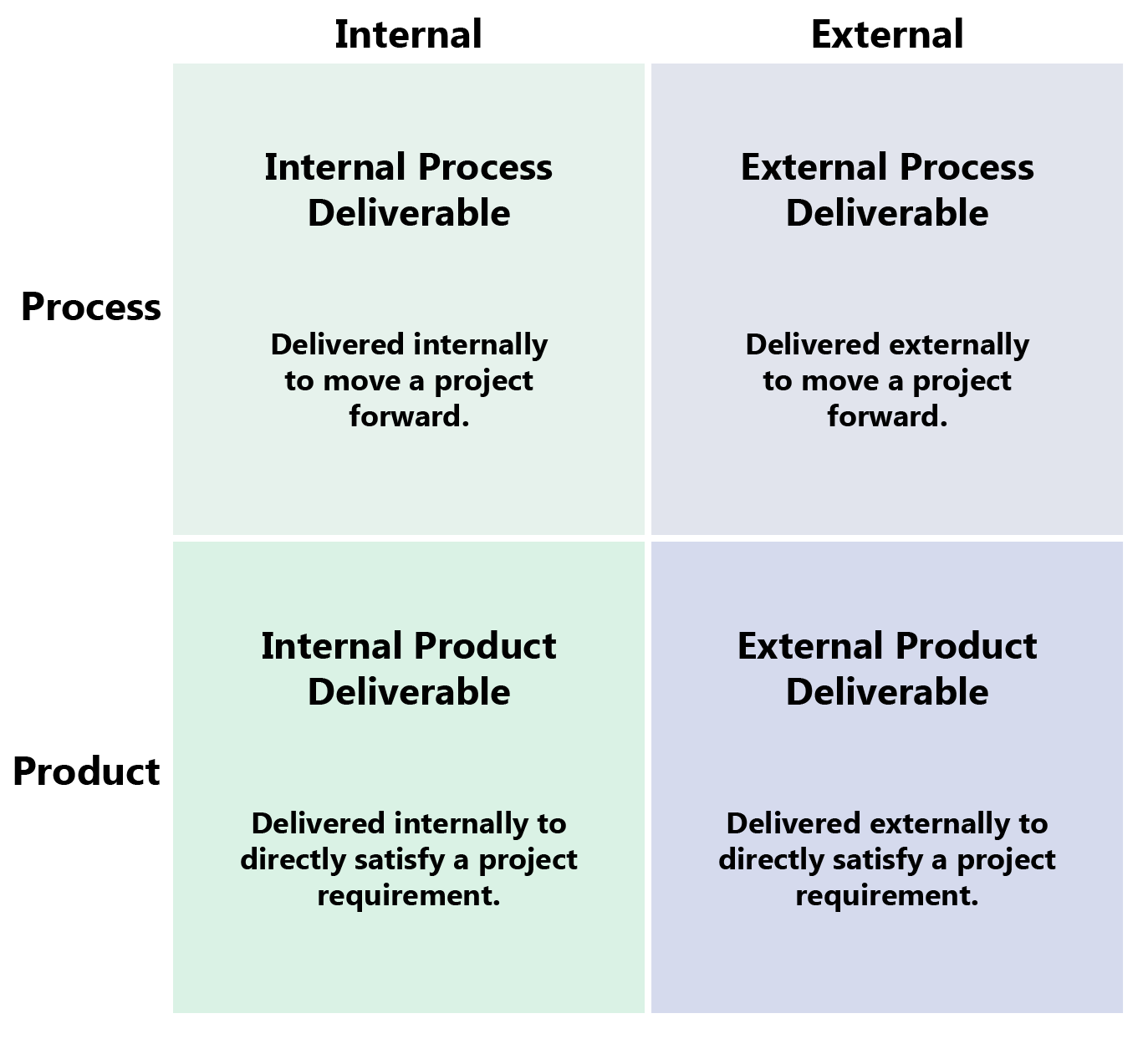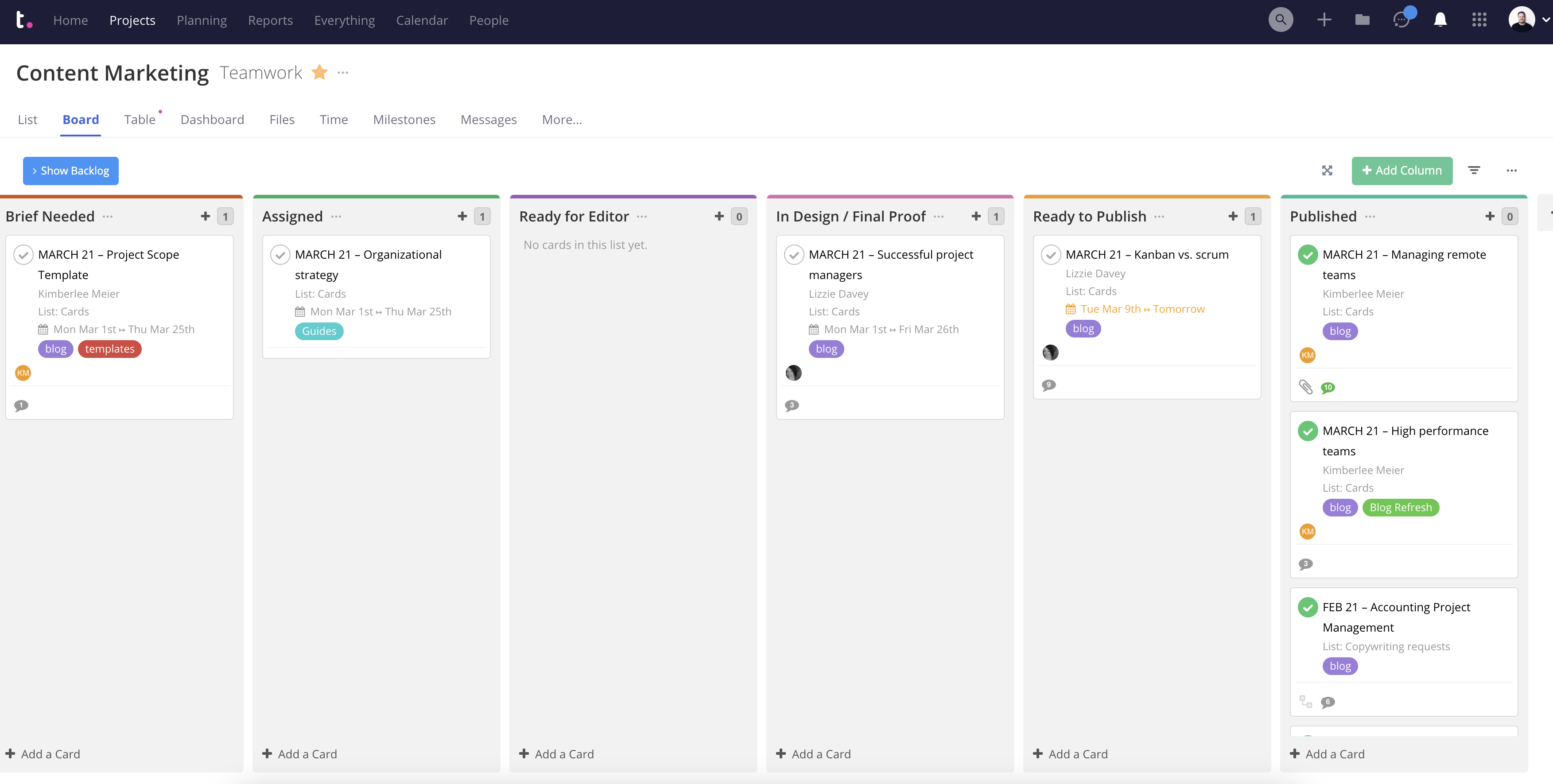“When there is teamwork and collaboration, wonderful things can be achieved.”~Mattie J.T. Stepanek, poet and motivational speaker
Project deliverables are the lifeblood of project execution.
Whether internal or external, final products or points along the way, deliverables demonstrate that your team is achieving project objectives.
For a concept this important, it might be surprising that the term “deliverable” isn’t always clearly defined or understood. Poor knowledge or execution of the concept annihilates teamwork, unity, and collaboration.
It’s the quickest way to push those “wonderful achievements” Stepanek described further out of reach.
With so much riding on getting deliverables right, we want to show you how to approach project deliverables — and how to turn that into project success.

Comprehensive project planning software to see the big picture
Break down your projects into workable and acheivable portions with project planning software from Teamwork.com.
Understanding project deliverables: A complete breakdown with examples
What are project deliverables?
Project deliverables refer to all the outputs — tangible or intangible — that are submitted within the scope of a project.
While the term may initially bring to mind the final outputs that get submitted at the end of a project, it actually refers to any project-related output submitted during any of the project phases.
Project deliverables need to be agreed upon early during the planning stage to properly set expectations and allocate resources, and documented within a governing project charter so they can be referenced throughout the duration of the project.
Internal vs. external project deliverables
Project deliverables can be classified as either internal or external. It all depends on whether they will be submitted internally to your own agency or externally to a client.
Internal project deliverables are submitted to your team members or to a collaborating department. Some examples of internal project deliverables (that will go through internal reviews) include:
Initial design
Time-tracking report
Project budget report
Progress report

External project deliverables are submitted to stakeholders outside of your agency, including clients and investors. Some examples of external project deliverables (that will go through client reviews) include:
Progress report
Initial design
Final design
Final product
Process deliverables vs. product deliverables
Project deliverables can further be classified as either process deliverables or product deliverables, depending on whether or not they will directly satisfy one or more project requirements.
Think of process deliverables like picking a color to paint your walls and product deliverables like revealing the first completed coat. Or, looking at a picture of a teal blue wall (process) vs. seeing it completed in all its glory in your actual home (product).
Both are important parts that make up the whole, but process deliverables don’t pack the same “wow” factor. Don’t get us wrong — that doesn’t make them any less important.
Process deliverables are intermediate outputs that move a project forward without directly satisfying a project requirement. These could look like:
Internal bug report to improve a software deliverable
Internal Gantt chart to inform the project workflow
Internal client onboarding checklist for a better project kickoff
Initial design project management plan for clients to review

Client onboard checklist template
Start your client relationship the right the way by providing a thorough, professional and friendly new client onboarding experience.
Product deliverables are final outputs that directly satisfy one or more of the project requirements. These are a bit more exciting.
They represent juicy project milestones that everybody is eager to review and weigh in on. They include things like:
Fully developed app
Live website
Complete content strategy
Finalized architectural blueprint
Categories of project deliverables
The two classifications (internal/external and process/product) are not mutually exclusive. They exist simultaneously for every deliverable (kind of like your stress if you aren’t using a project management tool like Teamwork 😉).
Together, they produce four types of project deliverables:

Internal process deliverable
Internal process deliverables are those that an organization delivers to another part of the organization. These are also processes rather than finished products, which means they are elements that move a project forward.
The copy or the artwork for that upcoming social ad is an example of an internal process deliverable: The asset moves from one party to another within your agency, and the asset is not the finished product.
External process deliverable
External process deliverables are the same concept as the previous, but developed and delivered to external partners.
A pitch, proposal, or marketing plan that’s destined for a client or prospect is one example: It isn’t the thing you’re selling, but it’s a key deliverable within (or heading toward) it.
Internal product deliverable
Internal product deliverables are cohesive, finished products. These items (physical or virtual) directly satisfy a project requirement and are delivered to internal teams rather than to end customers.
An inward-facing sales report is one example. It’s the thing you make, not just a part of that thing. It satisfies a project requirement and is delivered to your employees and teams, not clients.
External product deliverable
This is the client-facing version; the finished product you’re handing to your client that directly satisfies a project requirement.
Examples of project deliverables from common teams
Your project deliverables will vary from team to team, just like your daily tasks, workflows, and processes vary from one department to another.
Creative teams
Creative teams may include writers (👋), editors, designers, videographers, etc. Examples of project deliverables for creative teams are:
Blog post
Completed website wireframe
Finished print media graphic
Ready-to-send email outline
Professional services teams
Professional services teams may include accountants, architects, IT specialists, and lawyers. Examples of project deliverables for professional services teams are:
Completed financial report
Initial blueprint design
Functional VoIP system
Ready-to-sign customized contract
Product teams
Product teams may include managers, designers, UX designers, and analysts. Examples of project deliverables for product teams are:
Product roadmap presentation
Initial UI wireframe
A complete user journey map
Finalized customer retention report
Marketing teams
Marketing teams may include positions like SEO specialists, copywriters, brand strategists, graphic designers, and email marketers. Examples of project deliverables for marketing teams are:
Keyword research report
Draft of sales copy
Brand identity package
Social media graphics
Agency teams
Agency teams may include content strategists, account managers, SMMs, and developers. Examples of project deliverables for agency teams are:
Content audit
Media plan
Social media copy
Customized WordPress theme
Tips for managing project deliverables

Project deliverables make business happen, but keeping track of them isn’t easy — especially as your agency grows.
Try these seven tips to improve your results when managing project deliverables.
1. Define clear and measurable objectives
Deliverables are usually not difficult to define. But how do you define (and measure) the progress toward completing them? More importantly, how do team members know whether they’re on track?
Clear project objectives are key here — and for an objective to be clear it must also be measurable. Because if you can’t measure it, you may never be certain you’ve achieved it (and you definitely don’t know how close or far you are from doing so).
2. Break down deliverables
In client-facing work, deliverables are often big, ominous things. An entire marketing campaign, rebrand, or website is a big deal!
Here’s the key: Your project deliverables don’t have to be big. Break down that marketing campaign or website rebuild into smaller, more attainable chunks. These become deliverables (perhaps process deliverables) supporting the big-picture project.
3. Set realistic deadlines
When project deliverables are smaller and related (dependent or sequential), one delay can cause a ripple effect that seems to grow and grow. You’ll never eliminate every possible delay, but setting realistic deadlines (even down to the task level) will increase your chances of on-time success.
4. Prioritize and sequence deliverables
One danger of breaking down deliverables into more digestible chunks is that now you have more deliverables.
Sounds obvious, we know. But more deliverables sometimes mean more blank stares from your project team. With 27 possibilities to choose from, how does your poor employee know where to focus?
As you break down deliverables into smaller, more attainable sizes, rank them by overall priority and sequence (if some deliverables are dependent on others).
5. Establish clear communication channels
“The single biggest problem in communication is the illusion that it has taken place.”~George Bernard Shaw, playwright and critic
Keeping deliverables on track means keeping people on track. To do this well, create an environment where your people know at least three things:
What’s expected
Who’s in charge
Who to go to when confused, encountering problems, or needing help
When people know who to talk to about what, and they hear from you and other agency leaders at appropriate times, projects and their deliverables run more smoothly.
6. Use project management tools
Keeping track of project deliverables on paper or in a spreadsheet is better than keeping a running tally in your head, but there’s a better way. Project management software like Teamwork gives you far greater real-time insights than manual methods for managing project deliverables so you can keep the details straight and the schedules visible.

Robust task management software
Plan, track, and monitor all aspects of your tasks across every project or break them down even further with subtasks.
7. Monitor scope changes
Scope creep is a constant threat in the world of agencies and client services. Sometimes the scope of a project or a deliverable must change, but you need to know when that happens so you can adjust plans and budgets accordingly. When changes happen in secret or in the dark, project managers lose the ability to stay on top of schedules and keep project deliverables in the agreed-upon scope.
So keep an eye out for these changes, and create a communication environment where people volunteer this kind of information when they see it happening.
Tracking and fulfilling your project deliverables

You can’t afford to lose track of your deliverables. Knowing the status of each task and who’s responsible for what is critical to staying in control.
This is best accomplished with project management software that provides you with a way to view the status of your project’s deliverables visually.
Teamwork’s Kanban board view allows you to track your projects at a glance, modify tasks as necessary, and even set up triggers to automatically assign tasks, change due dates, and notify the right people when tasks move from one column to another.
Handling changes to your project deliverables

Occasionally, the deliverables of a project will need to change. This usually comes in the form of an expansion in the project scope where additional deliverables are added.
When a project is trending over budget, a project manager may work with the client to remove one or more of the lower priority, “nice-to-have” deliverables.
Whether you’re adding, removing, or modifying project deliverables, it’s important to be able to reflect any changes in your project management tool immediately. This will allow you to assess the changes' effects on your resources, budget, and project timeline.
Improve your project deliverables with Teamwork
Having clear, well-defined, measurable project deliverables is one fundamental pillar of project success. Another pillar is tracking those deliverables and the litany of tasks involved in each one.
Teamwork is the project management platform that helps your agency do both — and much more.
With Teamwork, you’ll gain a centralized singular source of truth for all your project data. You’ll know who’s working on what, and you’ll see and track dependencies so you can help your team prioritize the right tasks in the right order.
With multiple views, project timelines, and powerful project planning capabilities, Teamwork is the solution you’ve been looking for to help you sort out your project deliverables and whip your projects into shape.




